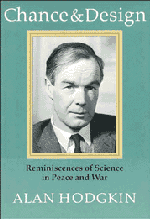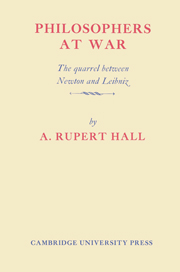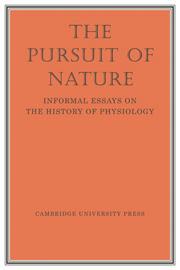Chance and Design
Alan Hodgkin believes that - contrary to popular conviction - chance plays quite as large a role as design in scientific discovery. This engaging autobiography charts the balance of the two in his own life. Beginning starts with an account of his childhood in an extended Quaker family. Not a great success at school, he nevertheless won a scholarship to Trinity College, Cambridge, and he writes informatively of the climate of university opinion in the thirties when he was an undergraduate and came to abandon the pacifist ideals of his upbringing. A chance observation on frog nerve led to a Trinity Fellowship and a year at the Rockefeller Institute in New York (where he met his future wife), to the Nobel Prize in 1963, and ultimately to the Presidency of the Royal Society. His experiments on nerve conduction seemed almost at the point of success when everything had to be abandoned on the outbreak of war in 1939, and for six years Hodgkin worked on the concept and design of airborne radar, described in the central section of the book as Flight Trials and Tribulations. The account of his return to civilian life and the resumption of experimentation includes two chapters of solid detail of Starting Again - for this is a book for any reader interested in the origin and development of a dedicated scientist.
Reviews & endorsements
'Hodgkin comes across in this enjoyable book as a genial and humane scientist passionately devoted to his research for its own sake both before and after being awarded his Nobel prize.' M. F. Perutz, Nature
'A masterly exposition of his life's work.' Sir Bernard Katz, New Scientist
Product details
March 1994Paperback
9780521456036
428 pages
237 × 191 × 22 mm
0.73kg
Available
Table of Contents
- Preface
- Part I. Beginning: Part II. Flight Trials and tribulations: Part III. Starting Again: Notes
- Bibliography
- Index.









